Alignment in Dungeons & Dragons is one of those concepts capable of igniting the most fiery of arguments, in part due to the varied approaches to the concept. Is alignment a planar truth, baked into the lore and worldbuilding, or is it simply a roleplaying tool? How can you use alignment in your game? Should we just chuck alignment into the trash?
We'll cover all of this, plus discuss some creative ways to use it at your table. Let's jump in!
- What Is Alignment?
- Approaching Alignment As a Setting's Cosmic Force
- Approaching Alignment As a Character's Personal Moral
- Using Alignment for Campaign Stories
- Talking About Alignment At Your Table
- Using Alignment in Roleplay
What Is Alignment?
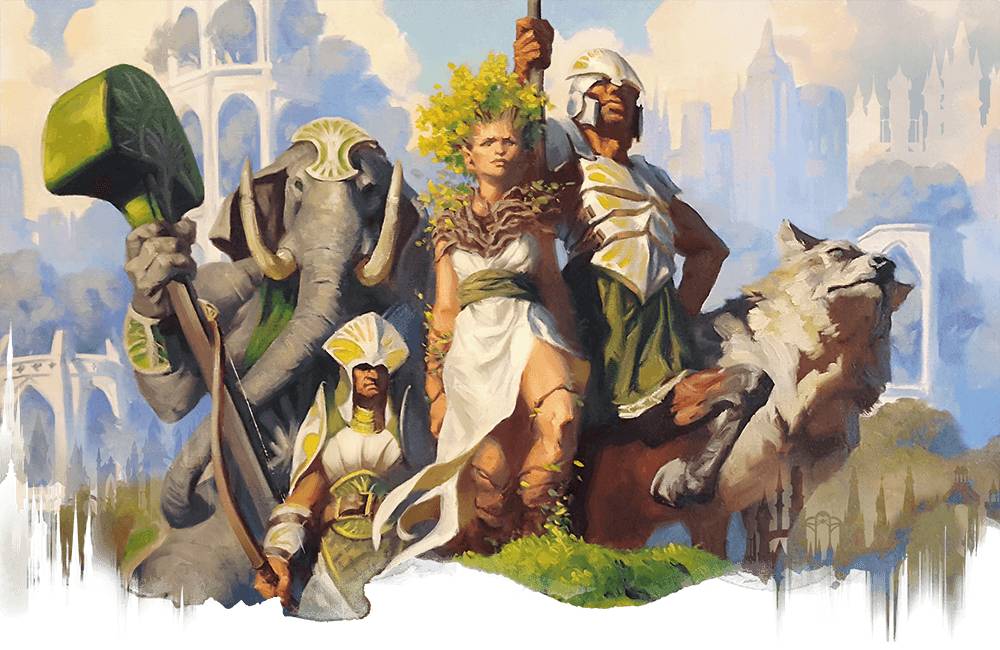
Alignment has been a part of D&D since its earliest days and has changed throughout the game's lifespan.
Broadly speaking, alignment describes a creature's principles and outlook on life. It's charted on two separate, contrasting lines, and the center of each lies neutrality—either moral ambivalence or a desire for balance. The axis of good and evil describes a creature's morality, while the pull between law and chaos reflects their outlook on society and order. Put the two lines together, and out comes the alignment charts you've probably seen everywhere.
Within the game, alignment is generally approached in one of two ways: as an indicator of a character's personal worldview; or as a larger force in the setting's cosmology, dictating power struggles against the opposing sides.
Approaching Alignment As a Setting's Cosmic Force
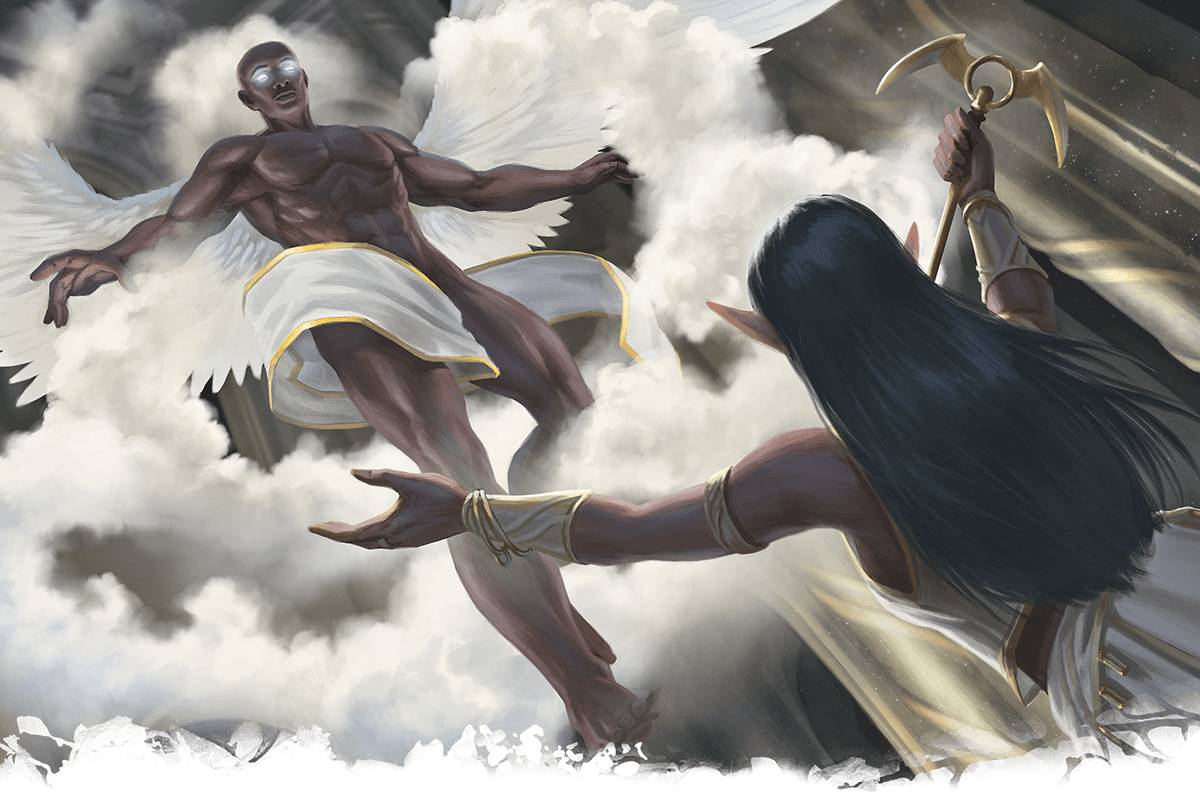
In the early days of D&D, alignment was imagined as a cosmic force that gripped the world. We can see this in the setting planes, for example, which embody deep philosophical truths. Elysium isn't just a place full of celestials who happen to be good, just as the Nine Hells don't simply house creatures with evil tendencies. Those planes and their creatures are, and always will be, the definition of good and evil. A barbed devil, for example, is literally a part of the larger forces of law and evil that fiercely fight against chaos and goodness.
This approach can provide a sense of shared understanding and stability many players enjoy. Players can generally expect certain creatures to act in accordance with the alignment they embody. A red dragon spotted in the distance is bad news. Similarly, no amount of Charisma will convince a being of absolute law, like a modron, to become an agent of chaos. The occasions when a creature strays from its expected alignment are rare and, therefore, a massive deal!
Characters in these games may also have more rigid restrictions and expectations in their class, backgrounds, gods, or patron. Paladins and clerics, for example, are commonly expected to share their deity's alignments. Similarly, a draconic sorcerer who channels the fiery power of a red dragon might not be permitted to be lawful good—the exact opposite of a red dragon's chaotic evil alignment. These restrictions put the cosmic rules into practice, requiring characters to make and embody a philosophical choice. Characters must ally themselves with one of the cosmic courses sweeping through the world and roll with the consequences... So no pressure!
Approaching Alignment As a Character's Morals
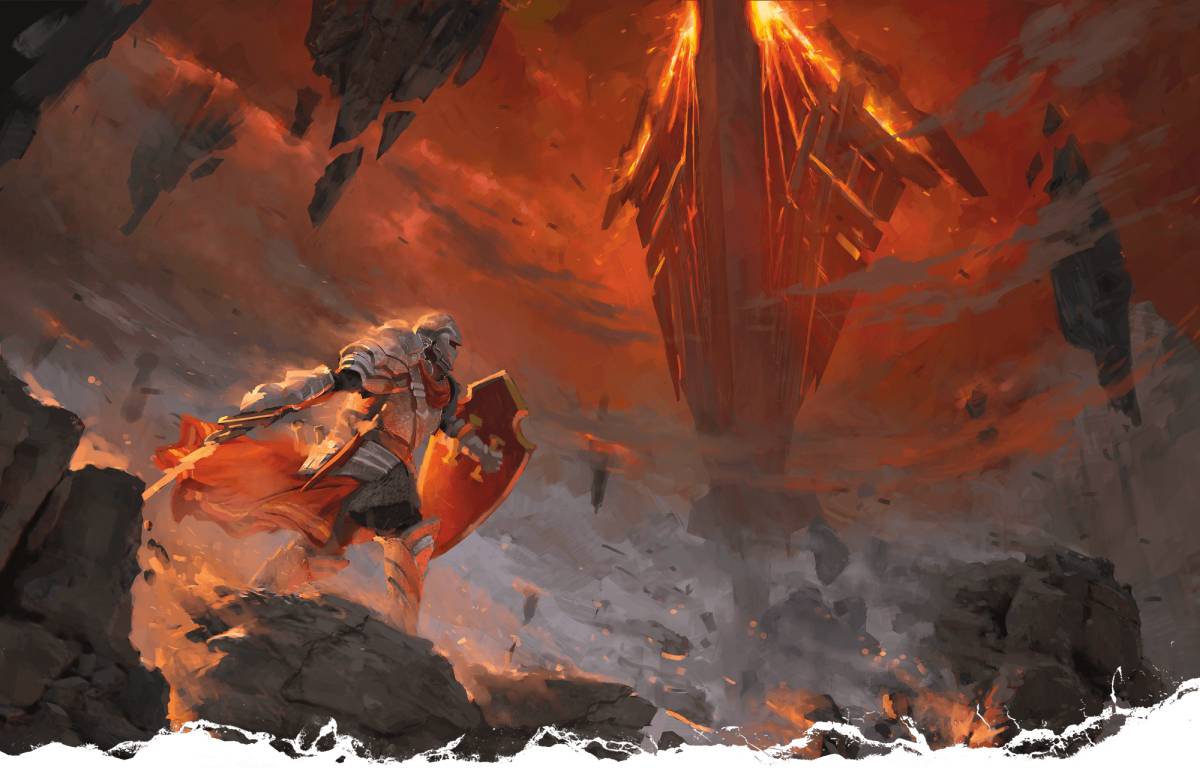
Some games eschew the cosmological approach, keeping alignment strictly descriptive of a creature's outlook on life. At these tables, a character's alignment may be used to guide their choices and roleplay and often stems from a personality trait, such as an ideal or a bond. For example, a rogue with the Criminal background idealizes honor and has an internal code of law she follows, and that includes a moral objection to stealing from poor folks just trying to survive. As a lawful good character, this code guides her when she chooses jobs or targets.
In this approach, creatures aren't forever bound by their alignment; when a character makes choices that stray from their alignment, it might shift. If our lawful rogue abandons her internal code, opting into ethically-questionable jobs indiscriminately, the player may decide to shift her alignment toward chaotic.
Using Alignment for Campaign Stories
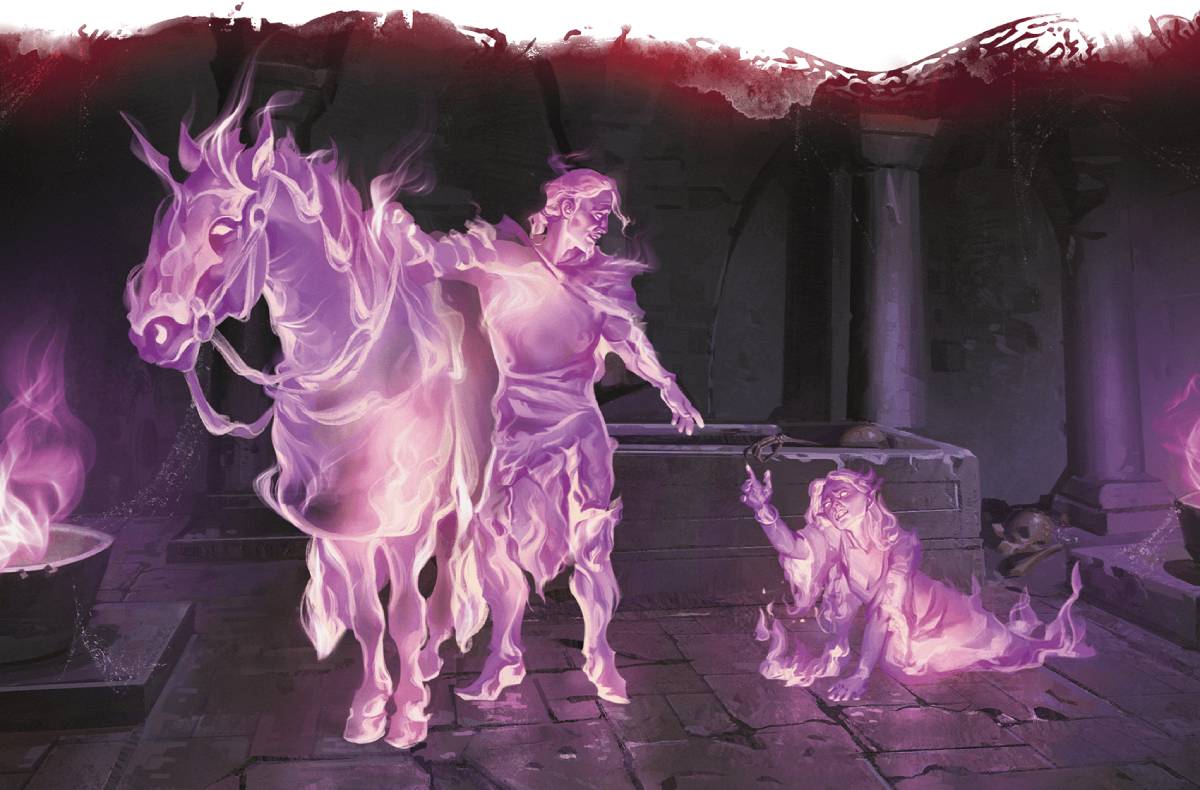
Alignment can be excellent fodder for stories, and you can tell interesting campaigns with alignment at the core of the story. Here are a few options:
Shades of Gray. Stories centered on contrasting viewpoints on the nature of good and evil are one of my personal favorites. Creatures in a Shades of Gray story don't fit neatly into moral categories, which often leaves characters questioning who or what is evil. For example, a villain engages in seemingly evil actions to bring about change for good. Setting like Eberron and Ravnica, with their many factions and noir intrigue, are perfect for this kind of story.
War of Good and Evil. In a traditional "good versus evil" story, the difference between the two sides is clear, and the dramatic tension lies in the question of which side will win. In Dragonlance: Shadow of the Dragon Queen, for example, there's no question that Takhisis, the Dragon Queen, is categorically evil and must be stopped. Whether good will succeed in defeating her is the question of the campaign. This type of story is a classic for a reason, and there is no shortage of evil creatures in the game for you to utilize.
Chaos Shall Reign. For a twist on the good-against-evil story, substitute the forces of law and chaos. The unending war between devilish law and demonic chaos is a classic option and is explored in adventures like Baldur's Gate: Descent Into Avernus.
Alternative Alignment
If you enjoy the cosmological framework but don't love the game's alignment as written, you can create alternative axes and choose entirely different forces. Simply switch out the traditional alignment forces for a different pair of opposite ideas. I like to choose a philosophy or abstract concept I find interesting and then decide on a contrast. Simple concepts can sometimes be easier to put into play, but the options are truly endless. You can create two axes that intersect or just choose one.
Here are some examples of opposing forces:
- Creation and destruction
- Empathy and apathy
- Growth and decay
- Material and spiritual
- Light and shadow
- Joy and grief
- Esoteric and superficial
Instead of focusing on two sets of competing forces, you could also set up your forces in larger groups. For example, you could use the inner Elemental Planes of Fire, Air, Water, and Earth as your primary cosmic forces. Or if you're a Magic: The Gathering player, you could use its five colors—white, blue, black, red, and green—as your group of forces. The five colleges detailed in Strixhaven: A Curriculum of Chaos are based on opposing color combinations.
Alternatively, create your own group of forces, drawing inspiration from your favorite media. Here are just a few possibilities:
- In Sailor Moon, sailor scouts are aligned with celestial bodies, which represent various virtues, and their choices affect their powers and guide their behavior. For example, Jupiter provides strength, protection, courage, and thunder energy. You could directly take Sailor Moon's planetary and celestial system or build your own.
- Persona offers a different framework, where characters are generally aligned with a mythological figure whose story echoes theirs. This is an excellent option for folks who love mythology. Players could choose from their favorite mythological figures from real world history or write their own entirely. If there is a particular type of story you want to tell, you could guide your players to a set of similar themes, for example, Persona 5's themes around rebellion.
- Creatures in Digimon have crests roughly based on their most prominent positive traits, like courage, destiny, hope, knowledge, or reliability. A D&D world that draws inspiration from here might focus less on positive versus negative traits and instead explore how those traits work together and what it looks like to grow or stagnate in those attributes.
- Shadow and Bone's worldbuilding, apart from their political factions, is built on whether or not you have access to magic and, if so, which kind of magic. You could use the various kinds of magic, Corporalki, Etherealki, and Materialki, as a basis for your world's forces.
Talking About Alignment At Your Table
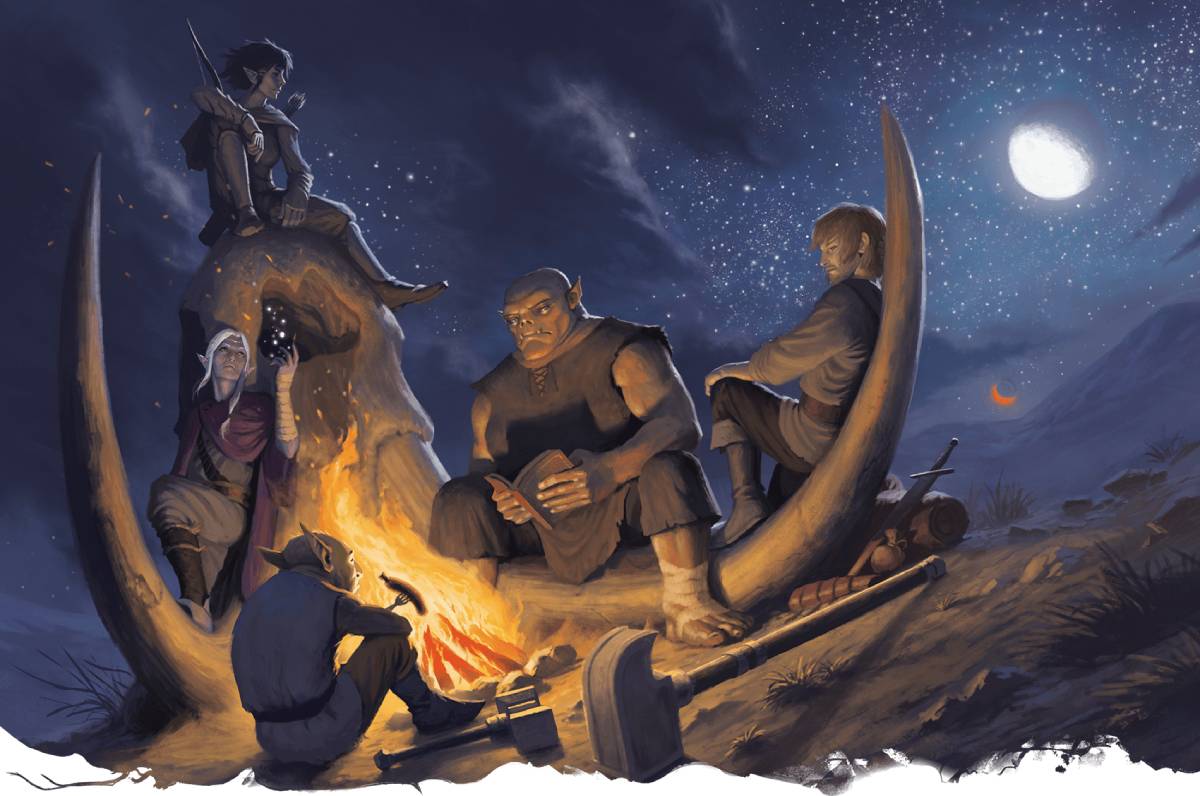
It's important to talk with your group about your approach to alignment, as even within the same approach to alignment, definitions of its concepts vary considerably. In Dragonlance, for example, the gods of good are concerned with ensuring mortals have the ability to make their own moral choices, and the gods of evil embody power and encourage placing individual desires above communal needs. Contrast this with Exandria, where the Prime Deities of good and neutrality work to maintain the sanctity of life, while the evil Betrayer Gods embrace destructiveness and death.
If you're a Dungeon Master, it's a good idea to define the alignment axis in your setting and describe what those concepts mean to you and your world. Sharing such definitions with your players enables them to make informed decisions for their characters. Getting everyone on the same page reduces the risk of arguments popping up mid-game.
Include alignment in your session zero topics when you begin a new campaign, and if you are mid-campaign, it's perfectly fine to throw a session zero right where you are! Here are some questions you may wish to discuss:
- How strongly is alignment intertwined with your setting and worldbuilding? Do certain creatures strongly represent these intrinsic forces?
- How much agency do various creatures have? Do you assign one alignment motivation to a group of sentient creatures, such as humanoids?
- Are there any restrictions or rules in your world for alignment with classes, races, or backgrounds? How closely must a character's alignment align with their god or patron's?
- How do you view player actions in terms of alignment; what kinds of actions change a PC alignment, and in what timeframe? What are the consequences, if any, for alignment changes?
- How do you view features that interact with alignment, such as the detect evil and good spell? Do you use any magical items that have specific alignment requirements, such as the talisman of ultimate evil and the talisman of pure good?
Do You Even Need Alignment in Your Game?
Alignment can offer a variety of positive experiences, but it’s worth asking this question. If a player at your table finds alignment problematic or overly restrictive, the good news is you don’t need it. Concepts like alignment exist to serve the collective storytelling that happens at your table. If something isn’t enriching your group’s experience of the game, you can collectively choose to toss it aside.
Using Alignment in Roleplay

However you approach alignment, remember that your character is a whole, complex being, and their values go deeper than simply filling in the alignment spot of your character sheet. What truly drives them, and why? How did they arrive at their moral outlook? What kinds of choices have they made in the past, and how have they previously solved ethical dilemmas? To begin to answer these kinds of questions, think about your character's ideals and bonds, and connect them to their ethics.
For example, our lawful good rogue comes from poverty, is deeply committed to her family at home, and idealizes concepts like honor and charity. She expressly steals from wealthy, powerful people to address the imbalanced distribution of wealth in the city—wealth gotten by evil exploitable of vulnerable people. Her strict code of ethics guides who she will steal from and how. She doesn't kill indiscriminately and is careful about who she may affect with her actions. In roleplay, she prefers stealth and information gathering, carefully plans thefts, reduces the risk to innocents, and tries to talk her way out of things before resorting to violence.
- Everyone believes in something, even neutral or unaligned characters. For some characters, it might be valuing balance between all the cosmic forces. For others, it might be an idea of agency or the freedom to choose for oneself.
- When playing characters with strong belief systems, such as lawful good paladins, alignment doesn't allow anyone to behave poorly and excuse it with, "It's what my character would do." We discussed this previously in the roleplaying villainy article, but it also applies more broadly. Lawful good, for example, doesn't always equal lawful foolish; a lawful good character doesn't follow every rule without considering consequences for their fellow adventurers, or they won't have fellow adventurers for long!
- Remember to remain respectful of your fellow players, regardless of your character's alignment, and work as a group of players seeking to have fun together.
- If disagreements arise—like a perceived mismatch between a character's alignment and actions—discuss it calmly and kindly. Often such disagreements can be remedied by seeking clarification about the character's motivations or checking for misunderstandings. DMs should be cautious not to override a player's agency in making choices for their own characters. It can also be helpful to revisit the campaign's alignment definition and make changes to clarify as needed.
Align Yourself
Alignment can provide a valuable framework for character building and roleplaying, as well as an arrangement of cosmic forces for your larger world's tension. As a concept, it is flexible, allowing you to choose an approach that works best for your table and the story you're telling together. Outline your definition of its concepts, and discuss it with your fellow players to ensure everyone is on the same page. Ultimately, regardless of your chosen approach, alignment exists to serve the collective storytelling happening at your table and enrich the fun experience for everyone.
Alyssa (@alyssavisscher) frequently rambles on Twitter about D&D. She especially enjoys analyzing its overall structure from a newbie perspective, bringing larger concepts to small, bite-sized pieces. She’s a parent of four, neurodivergent, disabled, and is impressively terrible at small talk.








-
View User Profile
-
Send Message
Posted Apr 16, 2023When I'm running a campaign I always make a comprehensive Campaign Guide and state all the rules I will use, so that people are very clear what they are signing for. As a veteran DM who plays since 2nd Edition I still strongly use Alignments specially for Divine classes. Dunno if you had heard that Forgotten Realms is/was "the land of the Walking gods". So through all it's history the gods had made their appeared many times, so in my Campaigns divine class does need to pick and follow a deity because it's their source of power, with that said these classes can change alignments, codes or believes of their deities without loosing their powers. I had never been against alignment changes but you will have to follow a different path, pick another deity or attune for breaking your vows/oath if you still wish to receive the blessing of your god. I guess I'm old school.
-
View User Profile
-
Send Message
Posted Apr 16, 2023Enjoyed reading it. Thanks!
-
View User Profile
-
Send Message
Posted Apr 16, 2023The anti-paladin became the Blackguard in 3rd I believe.
-
View User Profile
-
Send Message
Posted Apr 17, 2023Personally, I'd actually keep Law and Chaos, as they're a bit less subjective. A character that is truly Law would ultimately want some sort of code for the world to live by, or at least himself, while Chaos wants there to be no code, or at least doesn't want the code to restrain them. However, Void and "Source," (using the term "Source," due to things I learned from some pagan philosopher types) are good substitutes and/or representatives of Chaos and Law.
-
View User Profile
-
Send Message
Posted Apr 17, 2023I tend to shy away from implicitly putting a label on 'alignment,' since it's a very charged subject at some tables. Instead, I let players act in accordance with their characters' personalities. They usually have this down to a tee. In game, I try to explain the differences between devils and demons (since we're playing BG:DiA it's quite a big thing) calmly and I emphasize the lawful and chaotic traits in their behavior.
For instance, the imp familiar of a wizard once helped the characters out a great deal because it was told to do so. However, that same wizard's quasit pet wasn't so nice to them - the party tried to bribe the quasit with liquor, whereupon the demon took the bottle, smashed it, and continued to sleep.
-
View User Profile
-
Send Message
Posted Apr 17, 2023In my spare time, I'm creating a setting that uses the colors of Magic the Gathering as alignment. Fun stuff; really easy to find gray areas.
-
View User Profile
-
Send Message
Posted Apr 17, 2023I never terribly liked the idea of alignment as an inherent part of a creature. It always felt strange to me that a creature might act supposedly on their own free will, but then be bound to vague moral concepts like alignment. It would make more sense, I think, if the causation worked the other way, and creatures could change from celestial to fiend or vice versa depending on their alignment, even though it takes out a lot of fun character ideas for fallen angels etc.
-
View User Profile
-
Send Message
Posted Apr 17, 2023Darkness is associated with evil because evildoers use darkness to hide their evil actions. Light is considered good because the righteous should have no fear of being seen in the light.
Please don't judge my real life alignment by my username.
-
View User Profile
-
Send Message
Posted Apr 17, 2023Since the monsters in the DMG have alignment descriptors I do think they could have rules around influencing the NPC that connect to alignment.
Right now the Influence[action] it says you can't do anything to make a creature go against it's alignment, you could change the DC if it correlates with their alignment. So when the Rogue lies to convince the Hobgoblin King to let the party deliver his Gold Horde to help his starving subjects (when really they are returning the Gold to the village it was plundered from) The Charisma check gains +5 to the DC since this would be a Lawful Good act (and the Goblin is Lawful Evil). While a Cleric would have a -10 to their Charisma Check DC when trying to intimidate a Young Brass Dragon to abandon her duty to guard the temple to aid the party in defending the Halfling village from the Orc horde, since this is a Chaotic Good act.
-
View User Profile
-
Send Message
Posted Apr 18, 2023Same in my game. I prefer mortals to be like "my traits are.... therefore my alignment is....," contrasted with "my alignment is.... therefore my traits are....."
I did use a bit of "cosmic" lore in my game to retcon the older editions' predilection towards racial/cultural alignments, though. In my campaign, (for story lore reasons) the goddess of redemption came into and then immediately expended a great deal of divine power to break the hold that certain evil gods had over certain races (think Lolth and drow, Gruumsh and orcs, etc.). The evil gods were ticked off; but as a compromise, they were granted more lattitude to tempt members of the "goodly" races.
Even taking alignment into account, one of my table rules is "motive over mechanics." So even vile and evil monsters/NPCs have more to them than just "muaaahahahaha!"
-
View User Profile
-
Send Message
Posted Apr 18, 2023Very informative and complete article. Thanks!
-
View User Profile
-
Send Message
Posted Apr 18, 2023if they did that would be a step backwards, to when alignment really was more restrictive
-
View User Profile
-
Send Message
Posted Apr 18, 2023Having read Shadow and Bone, the Corporalki/Etherealki/Materialki distinction is more like your school of magic (you only get one in that world and you don't get to choose) than your alignment.
-
View User Profile
-
Send Message
Posted Apr 18, 2023More examples of evil creatures that do Radiant damage are Zariel, Tyranthraxus the Flamed One, and servants thereof.
As for paladin oaths, I would say that the Oath of Devotion is the only one that is necessarily too strongly aligned with Lawful Good. The Oaths of Conquest and the Crown do seem lawful-aligned, while the Oaths of Redemption and The Ancients seem fairly good-aligned. The Oaths of Glory, The Open Sea, The Watchers, and Vengeance don't seem strongly aligned with anything.
-
View User Profile
-
Send Message
Posted Apr 18, 2023No, alignment isn't needed. However, it is a helpful tool for many and those people should be allowed to use it.
Keep in mind that alignment is only a description of a character's morality, not their personality. It doesn't describe all of your character on its own. Instead, it helps you role-play a part of your character and you can use your Personality Traits, Ideals, Bonds, Flaws and more to help you role-play non-related parts of your character, or even with alignment as only one indicator morality used in conjunction with other factors.
-
View User Profile
-
Send Message
Posted Apr 18, 2023Well the current One D&D text on Influence[Action] reads "This action ... can’t force a creature to do something that is counter to the creature’s alignment" which I read as more restrictive. (A lucky high charisma character with the right resource allocation could potentially convince a red dragon to do the Lawful Good thing.) But it's definitely one of those philosophically fraught areas of DMs and NPC agency.
Just since monsters in the DMG already have alignment already, and I think that One D&D's Influence[action] has a pretty basic DC system (15 or Intelligence Score, adv if friendly, disadvantage if hostile) I never found the DCs too restrictive as a DM, I normally was glad to have a guide, but never felt beholden to them.
-
View User Profile
-
Send Message
Posted Apr 18, 2023A game that actually does this really well is Pendragon, where they have something similar to alignments such as Merciful/Vengeful. It actually ups the drama of the character that if they are a merciful character and the player wants to kill the incapacitated villain that they know will keep coming back to making trouble, they have to make a roll to overcome their mercy. If they can't they have to roleplay refusing to kill them. I found it generated really fun and exciting games that told engaging stories (and really is there that much of a difference of having to roleplay not being able to overcome your morals as roleplaying what happens when you fail to sneak past the castle guards?) I would love a system like this.
EDIT: Another system that is doing cool stuff with alignment is Avatar Legends which allows you to roll with a principle. I can see a version where you could roll with your alignment as an attribute rather than your normal attribute if it connects to your core value. Again, how to come up with an alignment score would be a huge change to the game.
-
View User Profile
-
Send Message
Posted Apr 18, 2023I dunno called me old school I guess but the years had showed me where to put everyone. I still believe everyone and anyone can still fit one of the 9 alignments no matter the characters complexity. Even when some Oaths do not seems to go towards any of the nine, I guess that is still fine, I mean that only means that anyone could choose any Alignment and still take such Oath, while other do not have that many options. In the past back in 2nd Edition Divine spellcasters/followers of a deity use to be just a step away from their deities alignment and I still believe in this. A good deity like Selune or her Church will never allow an evil Paladin that murder everyone on sight to be part of her temple people and would be stripped of his powers, but even when things like that happens in a campaign doesn't means it could be the end. Paladins can seek redeemtion/attunment or can also seek for a new evil deity.
As of randiant and necrotic. I guess is true some evils do radiant damage but are there good that do necrotic? I guess names changes with editions but in the past we had Light or Dark and/or sacred or profane bonus/damage. So I would say those are just wordings trying to separate a bit from being simple White and Black, so that the whole community accept the names.
-
View User Profile
-
Send Message
Posted Apr 18, 2023A question that many people seem to find hard to answer:
What is Commander Vimes (from Terry Pratchett’s books Guards!Guards!, Thud! Snuff, etc.) alignment? He is definitely good, but is he lawful, chaotic, or neutral?
-
View User Profile
-
Send Message
Posted Apr 18, 2023I've been developing a Bright / Shadow dichotomy for a while to be exactly that - they're not representations of good and evil so much as they are warring factions over the definition of morality.